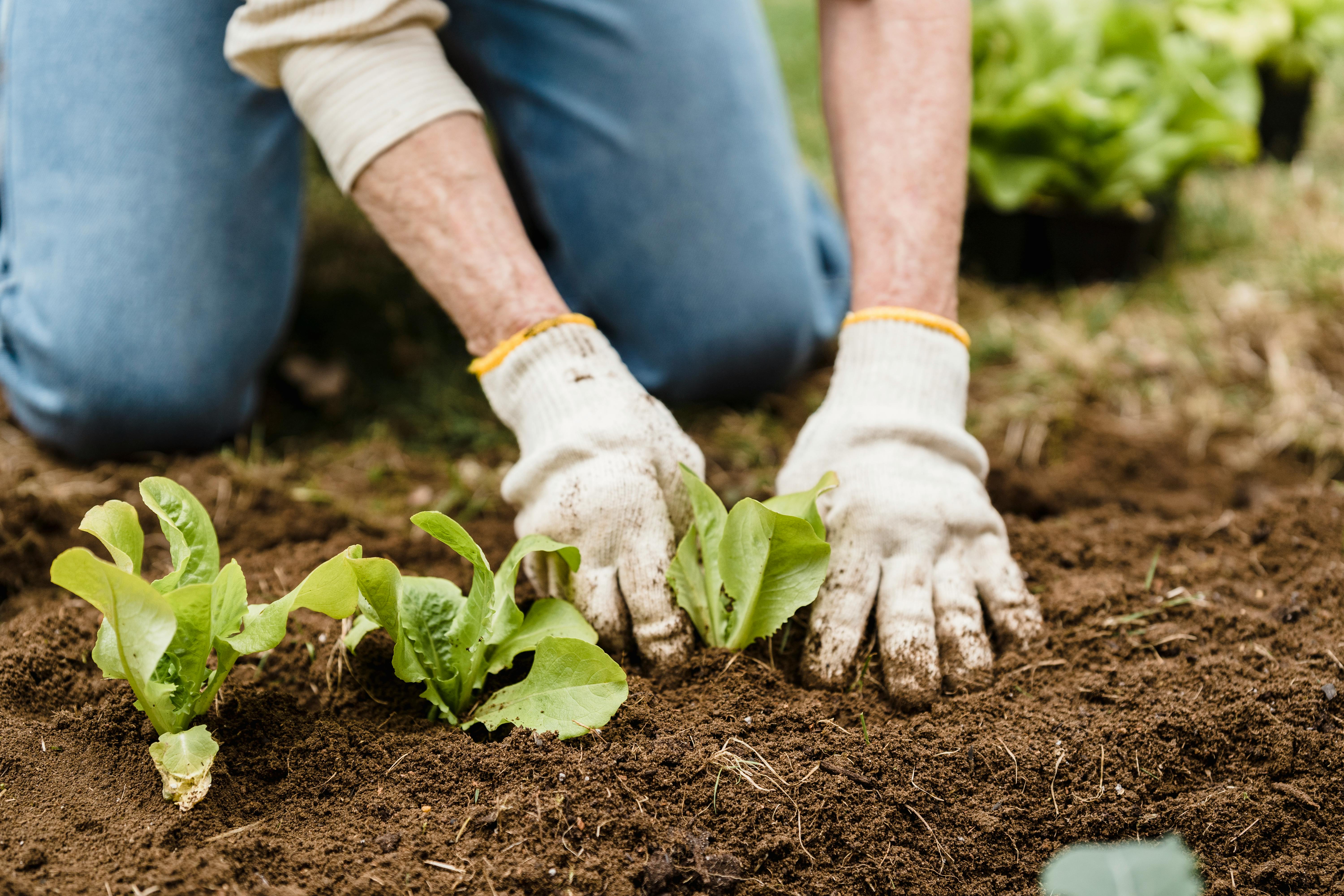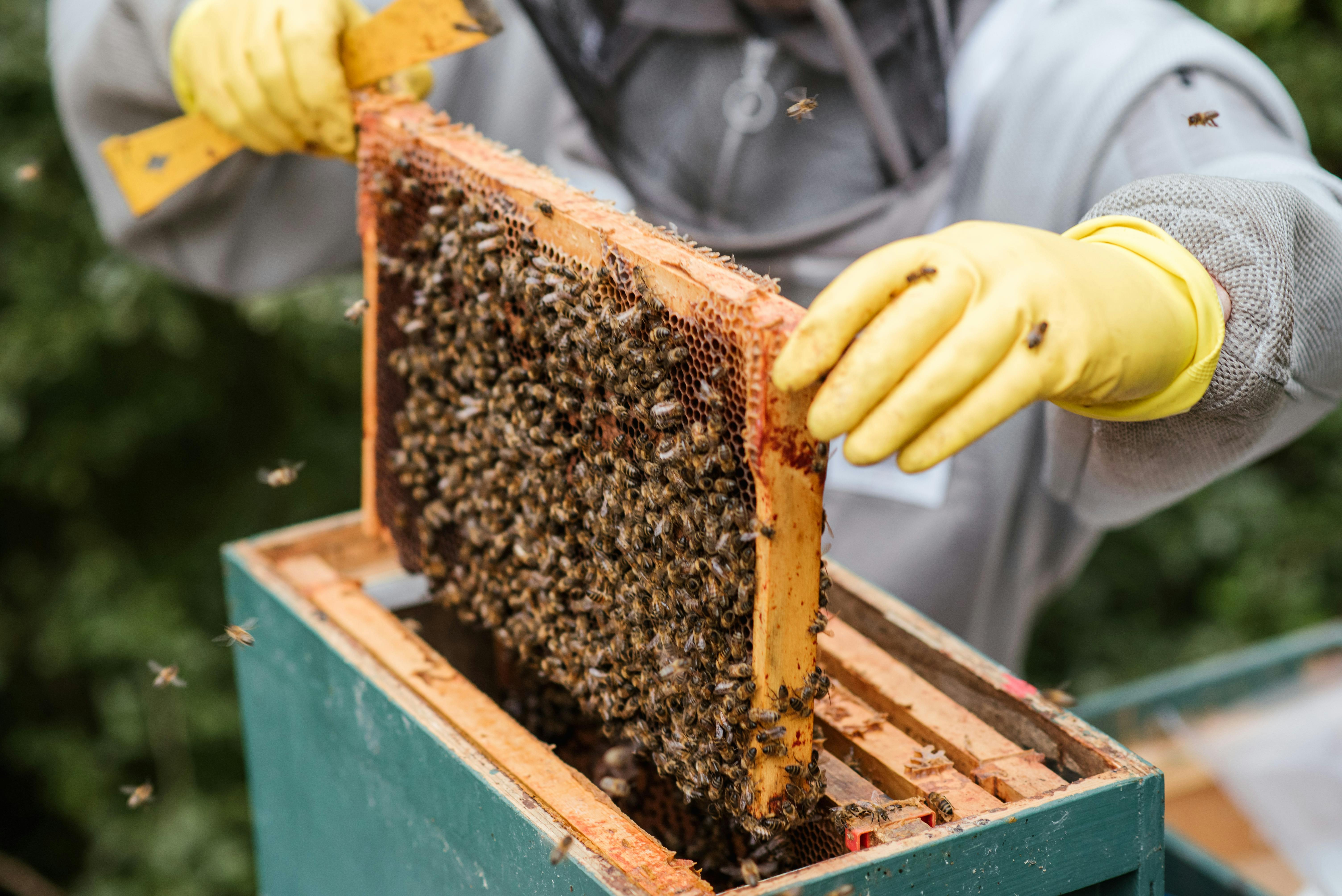Goat labor can be a challenging process, but there are ways to naturally induce it. With the proper preparation and care, you can help your goat give birth safely and without complications.
To begin, you’ll need to make sure that your goat is in optimal physical condition prior to labor. This means providing her with plenty of fresh water, nutritious food, and ample space to move around freely. Additionally, you’ll want to make sure her bedding is clean and dry so she will be comfortable during labor.
Once the goat is ready for labor, there are several natural methods that you can use to induce it. These include:
- Exercising the doe
- Massaging her udder
- Providing herbal supplements
- Increasing environmental temperature
These methods can help stimulate labor contractions, which will ultimately lead to a successful delivery. It’s important to keep in mind that these methods may not work instantly – they may take a few hours or even days before they begin producing results. However, with patience and proper care, your goat should be able to deliver her babies safely and without any complications.The natural induction of goat labor is a process that requires careful preparation. To ensure a successful outcome, the doe and her environment should be optimized to increase the chances of a successful labor. Here are some tips to help you prepare for natural induction of goat labor:
• Ensure the doe is healthy: Before inducing labor, it is important to make sure that the doe is healthy and in good condition. Check for signs of illness or any other health issues that could be impacting the labor process. Vaccinate against any common diseases and provide good nutrition for optimal health.
• Monitor hormone levels: During labor, hormone levels play an important role in initiating contractions and helping move things along. Monitoring hormone levels throughout the process can help improve success rates in inducing labor naturally.
• Create a comfortable environment: Goats are sensitive animals and can become easily stressed during labor. To reduce stress levels, make sure the environment where the doe will give birth is comfortable and free from distractions. This includes providing plenty of bedding material, adequate ventilation, and keeping noise levels low.
• Provide support: It is important to provide support to the doe during labor as she may need assistance with pushing or other physical tasks. Have an experienced person on hand who can help guide the process when needed.
Following these steps will help optimize conditions for natural induction of goat labor and improve the chances of a successful outcome.
Contents
- 1 Understanding the Stages of Goat Labor
- 2 Pre-Labor Signs and What to Expect
- 3 Creating a Safe Environment for Natural Induction of Goat Labor
- 4 Providing Nutrition and Hydration Support During Labor
- 5 Assisting the Doe During Labor: Knowing When to Intervene
- 6 How to Aid a Stalled Labor in Goats
- 7 Conclusion
Understanding the Stages of Goat Labor
Goats are one of the most common animals on farms, and they can give birth to kids just like any other mammal. Being aware of the stages of goat labor is essential for anyone who owns goats or works with them. Knowing when to expect a kid and how to recognize each stage can help ensure a successful delivery.
The first stage of goat labor is pre-labor, which typically lasts 8-12 hours. During this stage, a goat’s body prepares for delivery by increasing its hormone levels and softening its cervix. The goat may also appear restless, as if it’s trying to find a comfortable position. This is when it’s important to ensure that the goat has access to food and water, as well as a safe environment in which to deliver her kids.
The second stage of labor is active labor, which usually starts about 8-12 hours after pre-labor begins. This is when the doe starts pushing to deliver her kids. During this stage, it’s important to monitor the doe closely for signs of distress or difficulties delivering her kids. If she appears stressed or overwhelmed, it may be necessary to intervene with assistance from a veterinarian. It’s normal for this stage to last up to two hours per kid being delivered.
The third stage of labor is post-delivery care, which involves caring for both the doe and her kids immediately after delivery. This includes monitoring their vital signs such as temperature and heart rate, providing food and water to both mother and baby goats, and cleaning up any excess fluids or materials from the birthing area in order to prevent infections or other complications from developing.
Finally, there is recovery time for both the mother and her kids after delivery. It’s important for them to have time away from other animals in order to rest and bond with each other without distractions or stressors present in their environment. It’s also essential that they receive regular medical checkups during this period so that any potential issues can be caught early on before they become serious health problems.
Understanding the stages of goat labor can help ensure that a successful delivery takes place every time. By monitoring their hormone levels during pre-labor, offering assistance during active labor if needed, providing post-delivery care right away, and allowing adequate recovery time afterwards, anyone who works with goats can help make sure that all mother goats have safe deliveries with healthy babies every time!
Pre-Labor Signs and What to Expect
Pregnancy is an exciting time for many women, but it can also be full of anticipation and anxiety as the due date approaches. One of the most common worries is whether the baby is ready to come out and if the mother will know when labor is about to start. Fortunately, there are a few pre-labor signs that can give expectant mothers an idea of when labor may begin. It’s important to note that these signs could occur days or even weeks before labor actually begins, so it’s important to stay in touch with your doctor throughout your pregnancy.
One common pre-labor sign is a decrease in fetal activity. This means that babies will move less often as they get ready for delivery. It’s important to keep track of how often your baby moves throughout your pregnancy, so you know what is normal for you. If you notice a decrease, make sure to let your doctor know right away.
Another pre-labor sign is the thinning and softening of the cervix known as effacement. This happens when the cervix begins to stretch and thin out in preparation for labor and delivery. Your doctor will be able to tell you if this has occurred during prenatal visits by doing an internal exam.
A third pre-labor sign is an increase in vaginal discharge known as show or bloody show. As the cervix begins to thin, it can cause a small amount of blood or mucus discharge from the vagina which can be tinged with pink or brown coloration from old blood cells from the uterus lining being shed away in preparation for labor.
Finally, some women may experience contractions prior to going into labor which are typically stronger than Braxton Hicks contractions which are more irregular and do not cause any cervical changes or progress into labor. If you experience regular contractions every five minutes or closer together, contact your doctor right away as it could mean you are entering into active labor.
Being aware of these pre-labor signs can help expectant mothers prepare for delivery and have peace of mind knowing what to expect when it comes time for their little one’s arrival!
Creating a Safe Environment for Natural Induction of Goat Labor
Goats are an important part of many farming operations, providing milk and meat to both humans and other livestock. They can also be used for labor, but when it comes to labor induction, it is important to create a safe environment for the goats. Here are some tips on how to do just that.
Provide a Secure Space: Goats need a secure space in order to feel safe during labor induction. This could include providing a stall or pen with solid walls and a secure gate. It is also important to ensure that there are no sharp objects or other hazards that could injure the goats during labor.
Provide Comfort Items: During labor induction, goats will benefit from having items that provide comfort and stability such as hay bales, blankets, or even straw beds. This will help them relax and focus on the task at hand rather than feeling stressed or anxious.
Provide Proper Nutrition: Goats need proper nutrition in order to be healthy during labor induction. This includes providing them with plenty of fresh water and hay as well as grain mixes that are specific to their needs. It is important that they have access to these foods prior to labor in order to ensure they are getting all the nutrients they need during this time.
Monitor Health Conditions:
It is important to monitor the health conditions of goats during labor induction in order to ensure they are not suffering any adverse effects from the process. This includes checking for signs of pain or discomfort as well as signs of infection or illness. If you notice any of these signs, it is important to seek veterinary care immediately in order to avoid any further complications for the goat.
By following these tips, you can create a safe environment for natural induction of goat labor and ensure your herd remains healthy and happy throughout the process.
Providing Nutrition and Hydration Support During Labor
Labor is an intense and physically demanding process that requires a lot of energy. To ensure that the mother has the energy to effectively progress through labor, it is essential for her to stay hydrated and nourished. It can be difficult for some women to eat during labor due to nausea or lack of appetite, so providing nutrition and hydration support can be key in helping the laboring mother stay strong.
Nutrition during labor can come from many sources, including snacks, meals, and fluids. Snacks such as fruit, crackers, or energy bars can provide a quick boost of energy as well as vitamins and minerals that are important for maintaining strength during labor. Meals such as sandwiches or soups are also great options for providing sustained energy over time. Fluids are also important; water is the best option to help keep the mother hydrated while electrolyte drinks or sports drinks can help replenish lost minerals due to sweating during contractions.
It is important to remember that every mother’s needs will be different when it comes to nutrition and hydration during labor; some may need more food while others may need more fluids. It is important for medical personnel to closely monitor each mother’s needs and provide support accordingly. Providing access to nutritious snacks and meals as well as fluids throughout labor can help ensure that the mother has enough energy and strength to progress effectively through labor.

Assisting the Doe During Labor: Knowing When to Intervene
Labor is an important part of the birthing process for does, and it can be a stressful time for them. As such, it’s important for owners to know when to intervene and help the doe during labor. Knowing when and how to intervene can help ensure a successful delivery and healthy offspring.
The first step in intervening is understanding the signs of labor. Does usually experience contractions, which will become more frequent and stronger as labor progresses. If you notice that your doe is having difficulty or signs of distress, such as vocalizing or panting or pacing, then it’s time to intervene.
It’s also important to monitor the delivery process closely. If you notice that the delivery is taking too long, or if you see any signs of distress in either mother or offspring, then it’s time to intervene. If possible, you should contact your veterinarian as soon as possible for assistance.
When intervening, there are several things that owners can do to help ease the labor process. These include providing a comfortable environment with plenty of access to food and water; monitoring vital signs such as temperature; providing emotional support; and massaging the doe’s abdomen during contractions. It’s also important to provide physical support during labor by helping guide the offspring out of the birth canal if necessary.
Finally, owners should be aware of potential complications that could arise during labor and be prepared to call their veterinarian for assistance if needed. Some common complications include dystocia (difficult birth due to an oversized fetus), prolapse (when part of an organ protrudes from its normal position), retained placenta (when part or all of the placenta remains in the uterus after delivery), and uterine torsion (twisting).
Knowing when and how to intervene during labor can help ensure a successful delivery for your doe and her offspring. Being aware of potential signs of distress and knowing what steps you can take can go a long way in helping make sure everything goes smoothly with your doe’s birthing process.
How to Aid a Stalled Labor in Goats
A stalled labor in goats can be a difficult and worrying situation for any goat owner. Many times, it can be difficult to know what to do or how best to help the doe. However, there are some basic steps that can be taken to help get the labor progressing again.
First, it is important to determine if the labor is truly stalled or if there are just signs of slow progress. If the doe has been pushing for more than four hours without any progress, then it can generally be considered a stalled labor. If there have been no signs of progress within two hours, then it is also recommended that you seek veterinary assistance as soon as possible.
Once you have determined that a stall in labor is occurring, you will need to take action to try and assist the doe. It is important that you remain calm and not try anything drastic as this could cause more complications for both the mother and her kids. You can offer the doe some mineral oil orally which may help lubricate her passageways and make delivery easier. You should also contact your veterinarian who will be able to provide advice on further steps you can take.
If the doe appears distressed or weak during labor, then you may need to administer fluids intravenously in order to replace lost electrolytes and minerals which are vital for energy production during labor. This should only be done under veterinary supervision as administering fluids incorrectly could cause harm.
It is also important that you provide emotional support for the doe during this time; talking gently or stroking her neck can help her relax which may ease delivery of her kids. Ultimately, if all else fails then a caesarean section may need to be performed in order for successful delivery of all kids involved.
In conclusion, helping a doe through a stalled labor requires patience and an understanding of how best to assist her during this difficult time. If you remain calm and contact your veterinarian when necessary, then you stand a good chance of helping your goat through this situation successfully and with minimal stress on both parties involved.
Post-Labor Care for the Doe
After the delivery of a baby, the mother is equally important as is the newborn. It is essential to provide post-labor care to the new mother, known as ‘the Doe’. The post-labor phase consists of immediate care, rest and recovery period, and follow-up care.
Immediate Care: The main objective of immediate post-labor care is to provide the mother with comfort and reduce any risk to her health. This includes both physical and psychological support. Physical support includes providing basic hygiene such as changing bedsheets, cleaning vaginal area, and providing medications for pain relief. Psychological support may include moral support from family and friends.
Rest and Recovery Period: After delivering a baby, the mother must get ample rest for at least six weeks in order to recover from labor. During this period, it is important that she avoids lifting heavy objects or engaging in any strenuous activities. The mother needs to eat healthy meals that are rich in nutrients and drink plenty of fluids in order to gain strength back gradually.
Follow-up Care: It is important that the mother visits her doctor regularly during her postpartum period so that any health complications can be identified at an early stage. This may include taking regular blood tests or visiting a lactation consultant if she wishes to breastfeed her baby. Additionally, she should also take proper precautions while resuming sexual activities with her partner after delivery.

Conclusion
The process of naturally inducing labor in goats can be quite involved. It is important to identify the signs of impending labor and then intervene with supportive care if needed. It is also important to know when to contact a veterinarian for help. Knowing the stages of labor and how to deal with them properly can go a long way towards ensuring a successful birth.
It is also essential to provide adequate nutrition for the doe throughout the entire pregnancy and during labor. Goats should have access to fresh hay, clean water, grain, and minerals at all times. A balanced diet will ensure that the doe has enough energy reserves to cope with labor and delivery successfully.
Finally, it is important to maintain good hygiene practices throughout the birthing process in order to reduce the risk of infection or disease transmission. Keeping the birthing area clean and free from debris will help ensure a safe delivery for both mother and offspring.
In conclusion, inducing labor in goats naturally requires careful observation of the doe’s condition prior to delivery, intervention if necessary, knowledge of the stages of labor, proper nutrition throughout pregnancy and during labor, as well as good hygiene practices during birthing process. With this knowledge in hand, goat owners can be prepared for a successful delivery.





